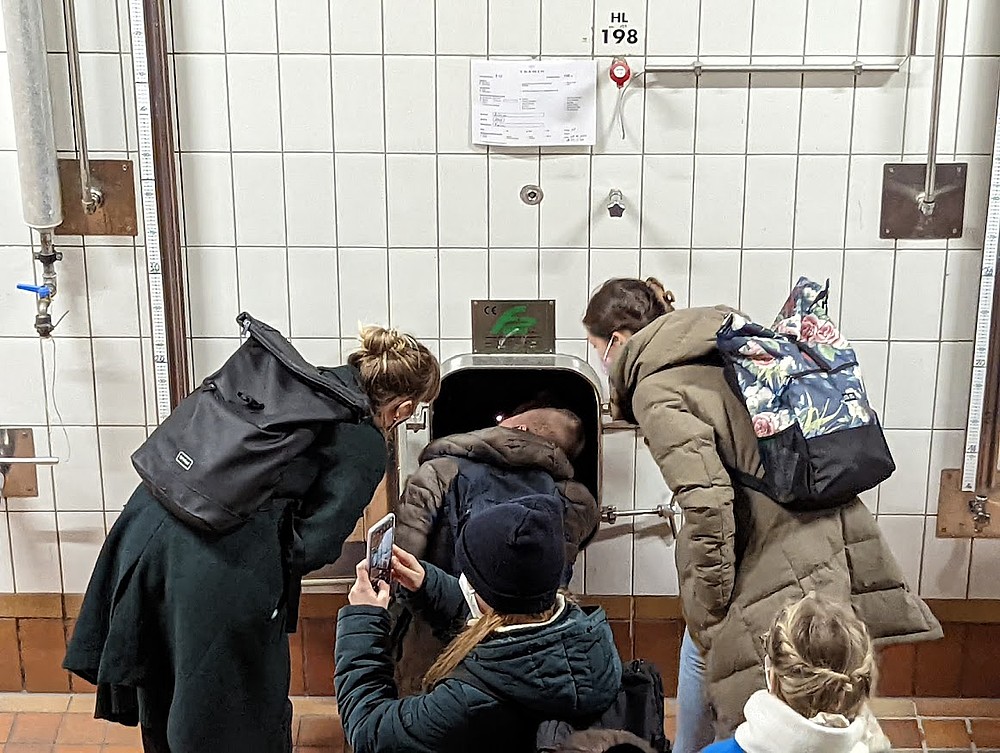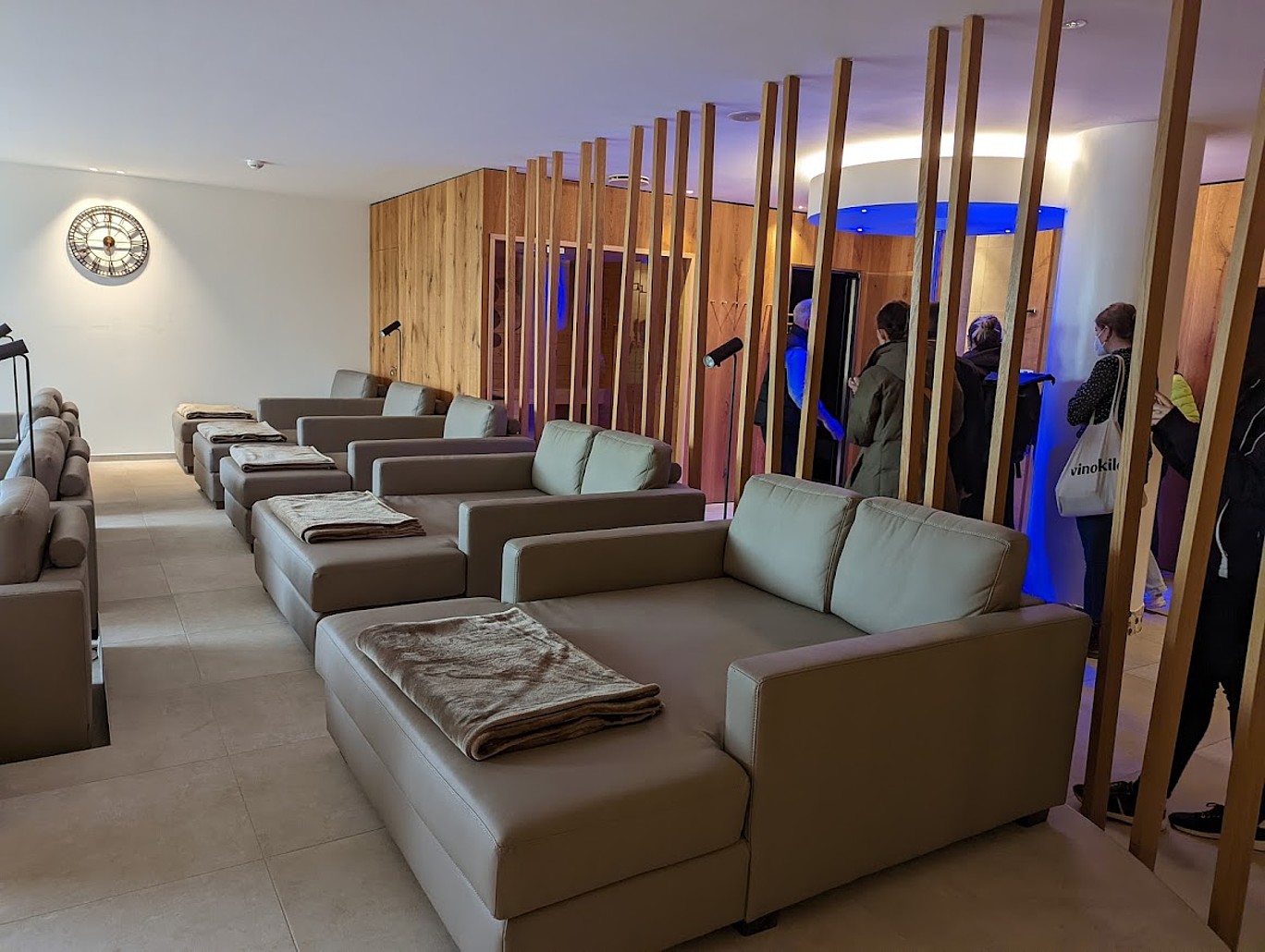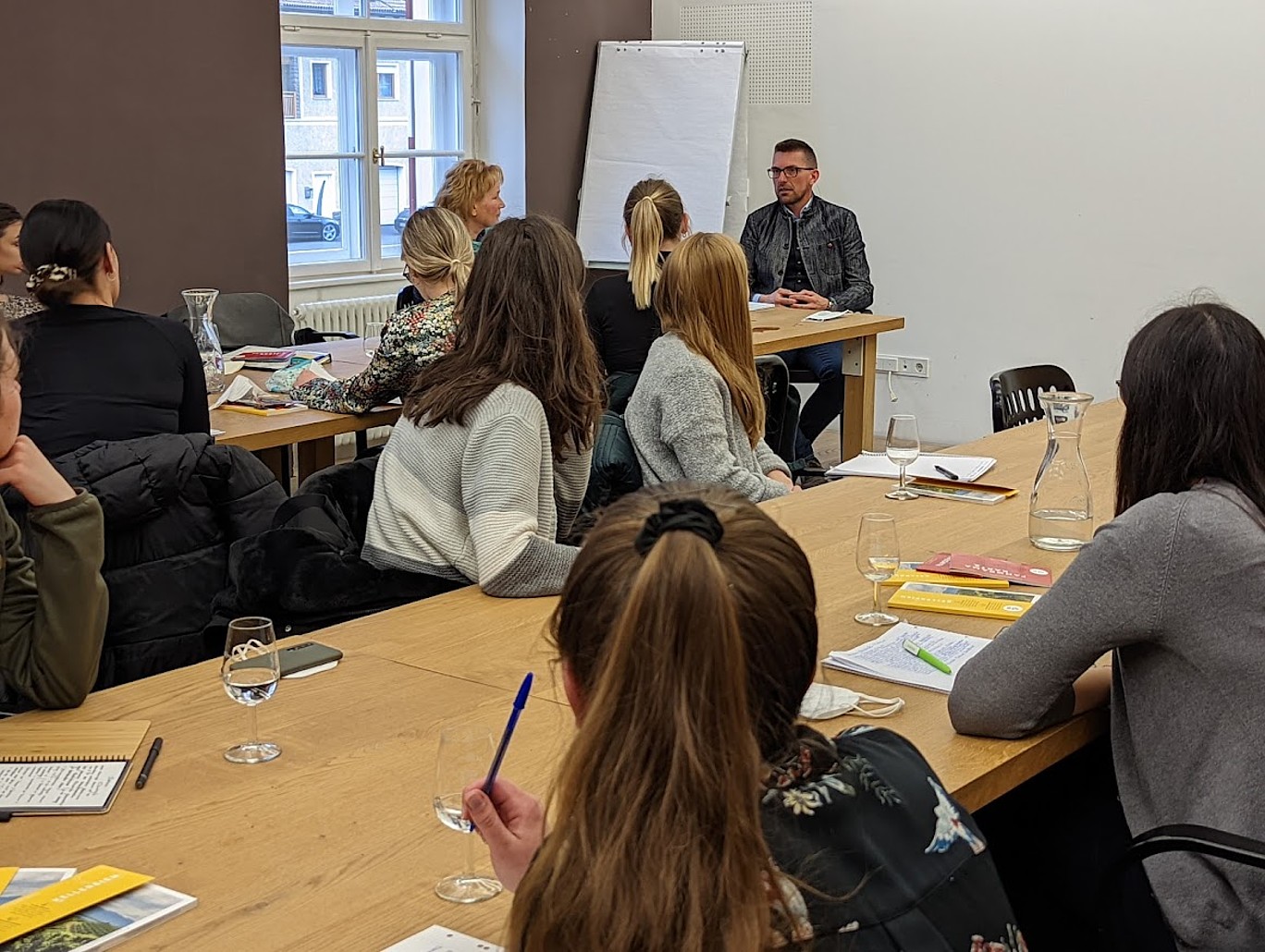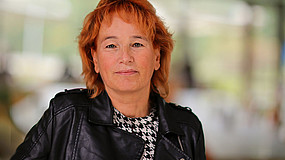On their excursion to South Tyrol, the Master's students of International Tourism Management had many interesting discussions and events on the subject of wine tourism. You can follow their experiences along the Italian Wine Route using the timeline in this article.

Author: Verena Nowatzky
Photos: Sebastian Benad
In mid-March 2022, students on the International Tourism Management Master's degree course went on an excursion to Italy. From 14 to 19 March 2022, everything revolved around the topic of wine tourism along the South Tyrolean Wine Route, the oldest wine region in Italy.

After a long train journey, the group arrived in Tramin, located directly on the Italian Wine Route, at around 6:30 pm on Monday. Exhausted, everyone fell into their beds, because the next day they had to leave early for the Tramin Tourist Association.
The agenda included a discussion with the president of the association, Stefan Calliari, and the director, Thomas Haberer. It revolved around the question of what role wine tourism plays for the region. Calliari explained that around 90 percent of tourists come from Germany and that they are not only interested in the wine itself, but also in many other things such as the beautiful landscape, cycling and hiking.
The historic wine route, which ran via Kaltern, Eppan and Tramin, among others, has only been increasingly geared towards tourism and restructured in the last four to five years. Various mobility cards (e.g. the Wine Pass) have been launched by the South Tyrolean Wine Route Association. This has noticeably eased the burden on the infrastructure and the costs incurred can be easily refinanced through tourism revenue. Furthermore, the discussion emphasized the strong small-scale structure in South Tyrol, which is why the tourism association takes many things into its own hands locally, such as a large part of the advertising. However, in addition to the tourist activities, the locals must not be left out, as authenticity can only be ensured by involving them. For the future, the tourism association has set itself the goal of appealing more to the younger target group as well as making the off-season more attractive.

The next stop on Tuesday was the 4-star Hotel Plattenhof Tramin, where the students took part in a guided tour of the hotel as well as a wine tasting of Gewürztraminer by the owner and former mayor Werner Dissertori. The Plattenhof is the smallest of the 300 winegrowers in the Tramin wine cooperative - but it has a history stretching back 400 years. Even Cardinal Ratzinger visited the hotel and Dissertori seems to have played a significant role in his appointment as Pope. His words to Ratzinger at the time:
"If you drink enough of the Gewürztraminer, you'll become pope."
The owner also reports some problems in wine tourism in South Tyrol. First of all, the tourism business is very seasonal, which is why the destination is working on moving the start of the season to spring. There is also a strong dependence on the German market. This is why the marketing measures are now primarily aimed at the Italian market, but also at Scandinavia and the Benelux countries.

They then went on to the Tramin winery - one of the most award-winning wineries in Italy. The students were given a guided tour including a tasting, during which they were shown the entire winery and all stages of production. The HSZG students then met Verena Pigneter and Stephanie Prieth from IDM (Innovators, Developers, Marketers), the innovation and competence center for sustainable development in South Tyrol. IDM is responsible for marketing the South Tyrol region and takes care of product development, bundling and communication. They are particularly interested in facilitating cooperation between the individual tourism stakeholders and thus creating synergies.
"The main aim of the organization is to maintain good quality in general and improve it at the same time," says Pigneter. Various product launches are also being used to get the season off to an earlier start, e.g. the culinary spring weeks in March and April.

Wednesday began with a city tour of Bolzano with Friederike Wielander. The provincial capital of South Tyrol has a number of sights to offer, such as the "Ötzi Museum" and Bolzano Cathedral - the largest church in South Tyrol. Wine is also a theme here, as the cathedral has a medieval wine gate.
The tour continued to the Bolzano Tourist Office, where, due to the pandemic, only 5 students were invited to an interview with Mirko Waldner, Head of the Passenger Transport Office, and his colleagues. The interview focused on how South Tyrol can become a model region for sustainable Alpine mobility. In contrast to general sustainable mobility, the challenge here is to sustainably overcome the significant differences in altitude, which make cycling particularly difficult. Harmonious coexistence between cyclists, pedestrians and motorists must also be ensured. As part of the 10-year plan, a dedicated competence center will be introduced, where at least five employees will focus exclusively on promoting cycling mobility at provincial level. There is also the South Tyrol Pass, where you are "rewarded" for using public transport. The more you travel, the less you pay per kilometer. Furthermore, digitalization is to be promoted through the optimization of digital services.

In the afternoon, we visited the Bolzano winery with cellar master Robert Oberkofler. The special thing about this winery is the vertical processing. Only ten percent of the winery is above ground, the rest is up to 35 meters below ground. After the one-hour tour, the students enjoyed seven wines, including the Pinot Blanc Moriz and the Gewürztraminer Selida. The quantity of liters produced in the winery is limited to 5000 to 7000 liters; true to the motto "quality over quantity".
Today we went to Kaltern, where the group had a discussion with Sarah Filippi and Elisabeth Ceolan from the tourism association. She emphasized once again how important a good quality tourist offer is for competitiveness. However, cooperation between the tourism associations themselves and the IDM is just as important, especially because the sense of community between the 15 wine villages and the 530,000 inhabitants of South Tyrol is very strong."We have to work together and we have to work together," says Filippi. She describes wine as an everyday culture that has always existed, but has only been made tangible for guests in recent years through improved experience. This is achieved primarily through many different wine tourism events, such as the Wine Safari or the Night of the Open Cellars.

The group then hiked to Lake Kaltern to regain their concentration for the next item on the program: A talk with the president of the South Tyrolean Wine Route, Manfred Vescoli. He talked about the origins of wine tourism as it exists in the region today. In 2000, the "South Tyrolean Wine Route" association was founded and 16 member municipalities joined together. In the meantime, the name Wine Route has become very well known and stands for high quality. Vescoli also explained that the reserves have not yet been fully exhausted. For example, authentic cuisine as a culture must interact even more with wine. It is also important to appeal more to Italians, a target group that has grown in recent years. Younger travelers with a new mentality are also coming to the fore, which also needs to be taken into account.
On the last day of the excursion, an interview took place in the morning in St. Michael with Thomas Rauch, the managing director of the Eppan Tourist Board, in which unfortunately only five of the Master's students were able to take part due to Corona:
Eppan wine is a brand in itself and the largest wine-growing community in South Tyrol. The town of Eppan stands out above all as the region with the most castles in Europe, but also impresses with its lakes. In the future, the Bike Region South Tyrolean Wine Road will also be created here by investing in the guidance and coordination of cycle tourists.
Prominent guests, such as the DFB national team, are also welcomed to Eppan. Although this involves intensive costs, it also generates an enormous media presence. Rauch also emphasizes the importance of designing events and offers not only for guests, but also for the locals, in order to create a harmonious coexistence.

After a joint summary and brief classification of the knowledge gained, the afternoon was free for the tourism students to explore the wine tourism offers in the area on their own.
After four eventful days with plenty of input to digest, the Görlitz delegation made its way back to tranquil Saxony on Saturday.

The strong, family-like sense of community in the South Tyrolean wine region has left a lasting impression. Guests are welcomed with great warmth and the businesses, associations and organizations also place great value on cooperation. The group was also impressed by the fact that every South Tyrolean is fluent in both German and Italian, meaning that both cultural groups feel equally at home in the region. For the future, the tourism service providers in wine tourism are aiming for greater independence from the German market by tapping into additional target groups from other countries and extending the season.
And last but not least, it should be noted: Despite all the hospitality, the locals must not be ignored under any circumstances. This is the only way to ensure respectful interaction between tourists and locals and avoid a loss of authenticity.
